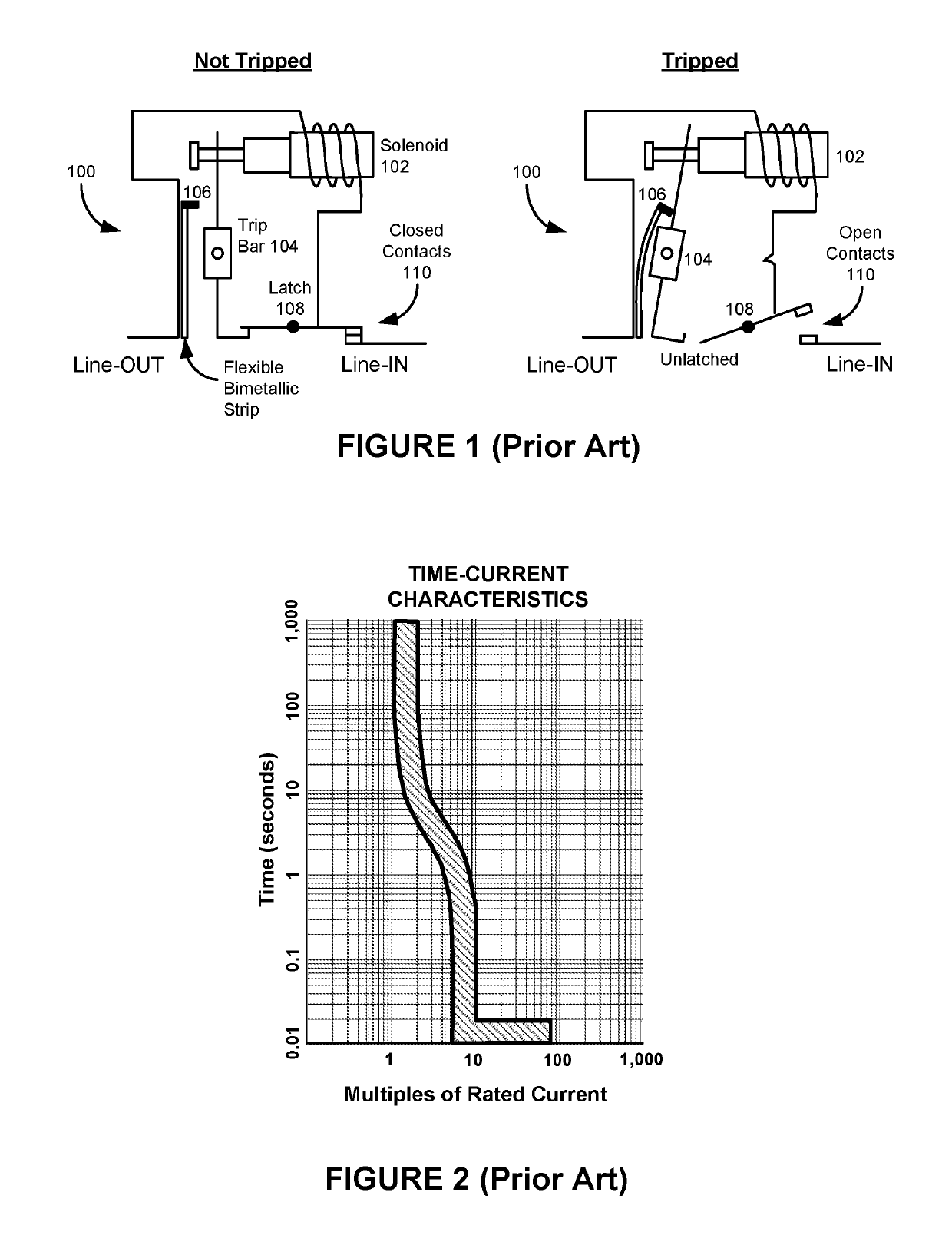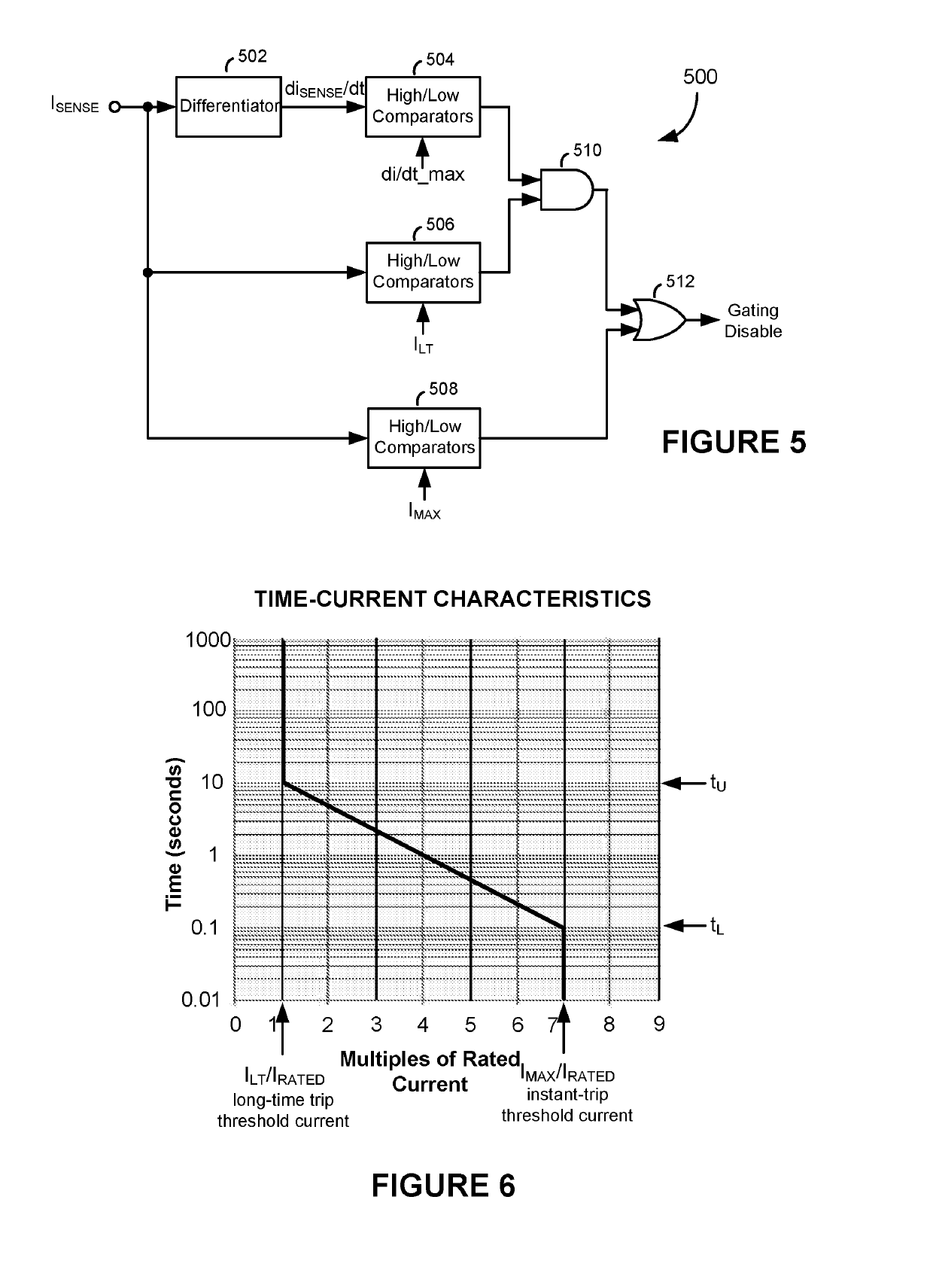Solid-state circuit interrupter and arc inhibitor
a technology of solid-state circuit interrupter and arc inhibitor, which is applied in the direction of emergency protection data processing means, emergency protective arrangement details, electrical equipment, etc., can solve the problems of motor reliability, number of important limitations, and damage to electrical equipment, and achieve the effect of minimizing hazards
- Summary
- Abstract
- Description
- Claims
- Application Information
AI Technical Summary
Benefits of technology
Problems solved by technology
Method used
Image
Examples
Embodiment Construction
[0028]Referring to FIG. 3, there is shown a high level drawing of a combined solid-state / mechanical circuit breaker apparatus 300, according to an embodiment of the present invention. The combined solid-state / mechanical circuit breaker apparatus 300 comprises a solid-state interrupter and arc prevention device (SSI / APD) 302 which is designed so that it can be easily connected in series with a mechanical circuit breaker unit 304 (e.g., a conventional UL 489 circuit breaker) in an electrical distribution panel. One principal function of the SSI / APD 302 is to serve as an ultra-fast circuit interrupter. During operation the SSI / APD 302 continually monitors current flowing through the circuit it is protecting. Since the mechanical circuit breaker unit 304 is connected in series with the SSI / APD 302 the current also flows through the mechanical circuit breaker unit 304 and the connected load. If the monitored current (indicated as ISENSE in FIG. 3) exceeds some predetermined threshold cur...
PUM
 Login to View More
Login to View More Abstract
Description
Claims
Application Information
 Login to View More
Login to View More - R&D
- Intellectual Property
- Life Sciences
- Materials
- Tech Scout
- Unparalleled Data Quality
- Higher Quality Content
- 60% Fewer Hallucinations
Browse by: Latest US Patents, China's latest patents, Technical Efficacy Thesaurus, Application Domain, Technology Topic, Popular Technical Reports.
© 2025 PatSnap. All rights reserved.Legal|Privacy policy|Modern Slavery Act Transparency Statement|Sitemap|About US| Contact US: help@patsnap.com



